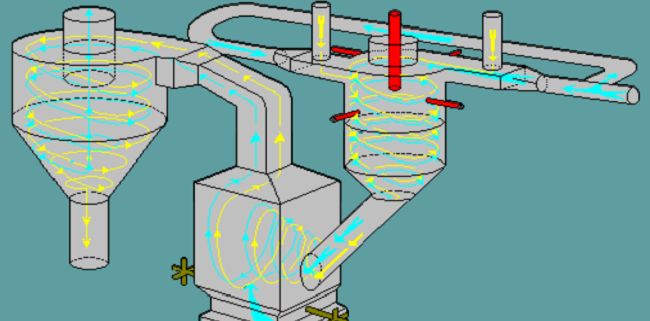The traditional lime calcining process is the lime shaft kiln. At present, the lime production enterprises are affected by many factors such as investment, site and so on. At present, the lime shaft kiln is one of the most preferred preparation processes. With the progress of science and technology and the development of the times, the lime industry is also constantly seeking new solutions. Luoyang Building Material and Architectural Design and Search Institute will gradually enter the public’s vision by using mature cement preheater technology for reference and developing a new suspension calcining active lime technology. Following is a comparative introduction of two different lime calcination processes, so that you can have a simple understanding of the two processes.
- Summary of vertical kiln lime technology:
The loader loads the qualified raw fuel into the limestone bin and the coal bin respectively, and then transports it to the mixing bin through the conveyor belt. The raw fuel is weighed accurately by electronic scale according to the set value. The mixture is evenly fed by vibrating feeder, and then transported to the hopper on the top of the furnace by hoisting truck. The distribution in the furnace is completed by the spiral case distributor on the top of the furnace. The burden moves downward slowly by self-weight and passes through the preheating zone, the forging zone and the cooling zone one after another. In the process of burden decreasing, there is complex heat exchange with the hot rising gas flow, accompanied by the decomposition of limestone and the growth of lime grains. When the whole process is completed, it is also cooled by combustion-supporting air to 40-60 C, and then unloaded by the unloader to the finished product belt outside the furnace without air leakage. Lime is transported to finished silo by multi-bucket hoist. If screening is required, the first screening is carried out and then loaded into a block ash bin and a fly ash bin.
- Summary of Suspension Calcination lime technology:
Limestone is crushed and grinded to a certain fineness by its good grindability, and then fed into the suspension calcination system according to the required feeding amount. The Suspension Calcination system of active lime consists of three-stage suspension preheating system, fluidized calciner and multi-stage cyclone cooling system. Feed raw meal is preheated by preheating system to 600 C and calcined in suspension fluidized calciner. Limestone powder is heated and decomposed to form lime powder here. After separation by gas separator, about 900 C flue gas enters the preheating system for raw meal powder. The burned lime powder is cooled by multi-stage cyclone cooling system. The cooled products are sent to storage for intensive packaging (or bulk loading). After leaving the factory, the air is heated to about 400 C and enters the calciner to be used as combustion-supporting air. The flue gas discharged after dust removal meets the discharge standard.
Although the traditional vertical kiln production process has less investment, the inherent shortcomings are also the problems faced by major lime production enterprises, such as: 1. Limestone particle size is limited, raw meal burning rate is high; 2. higher operating level requirements; 3. If the fuel contains high sulfur, the finished product contains high sulfur. If these problems need to be solved, we have to rely on new technology and process, Suspension Calcination lime production process, not only can solve the above problems, but also can meet the current high-yield, low-consumption, environmental protection and energy saving and related national policy requirements, promote the iterative upgrading of the industrial chain.



